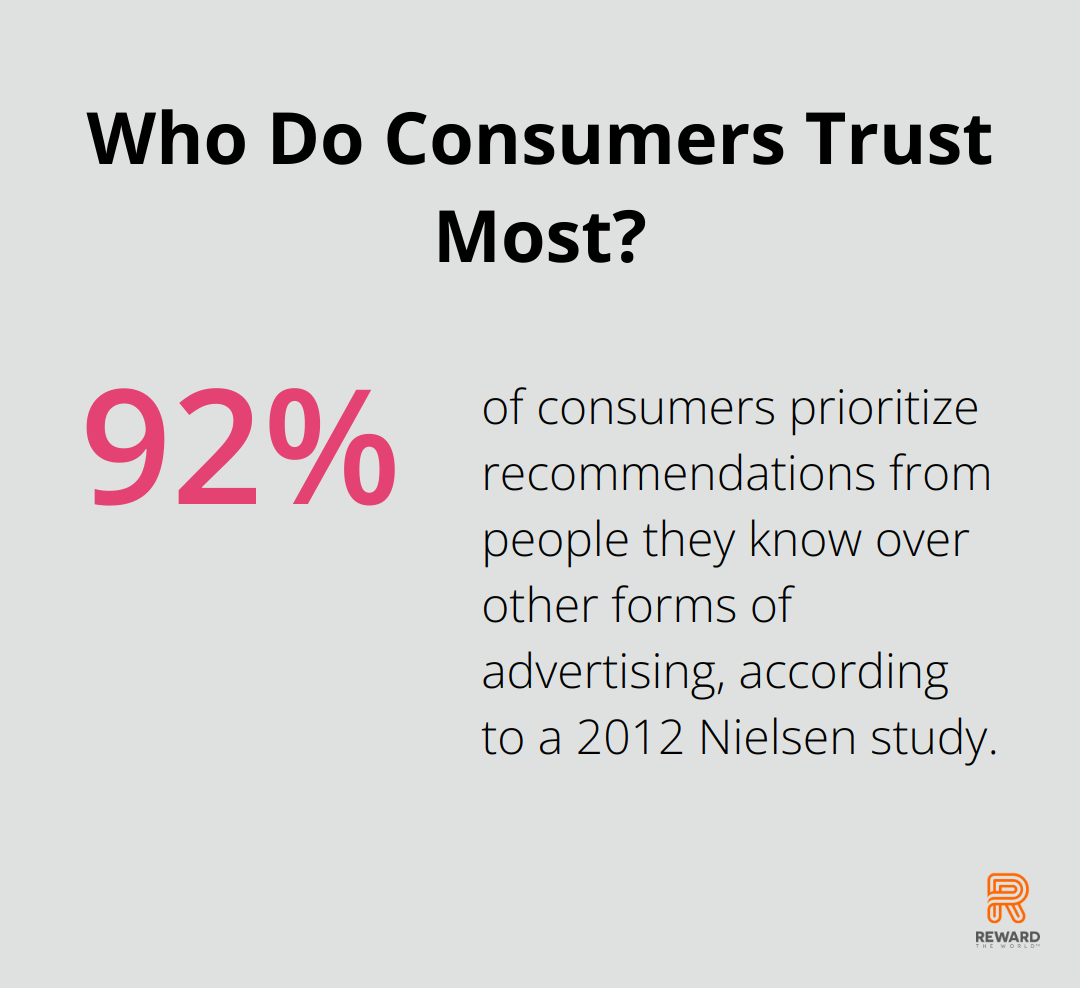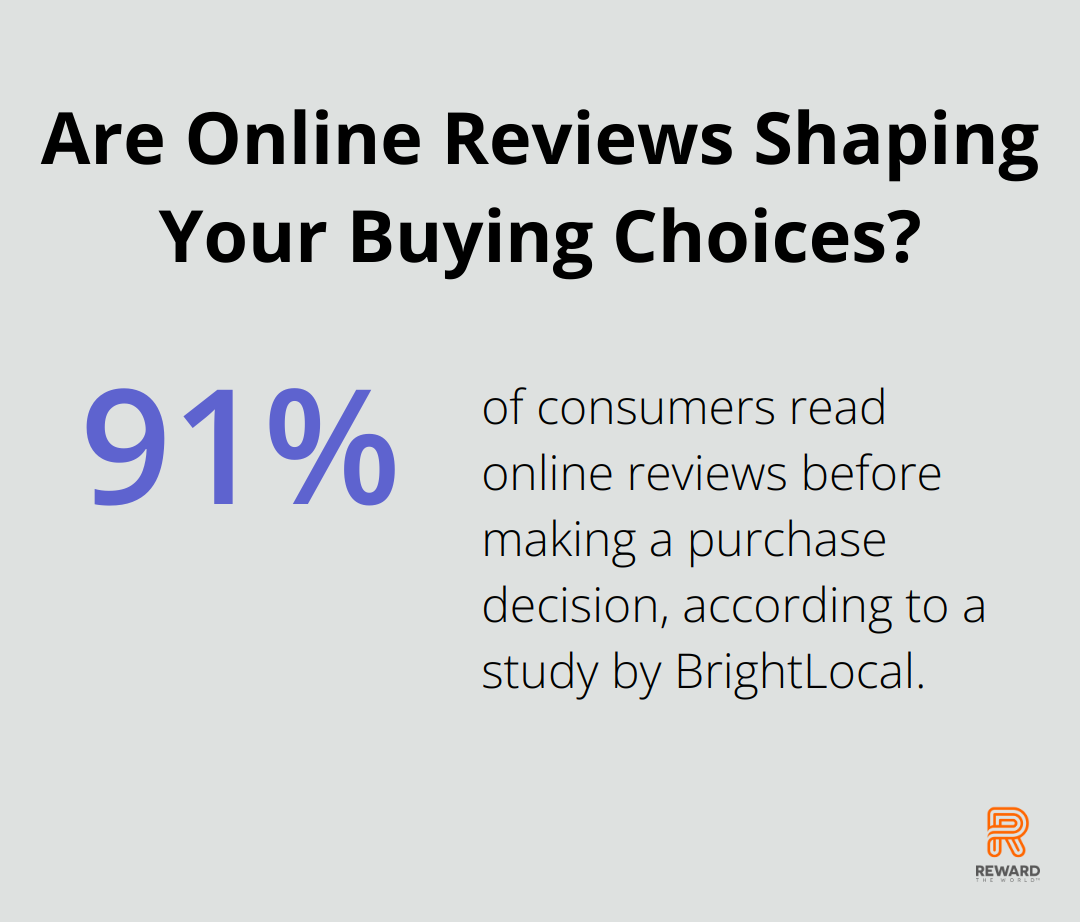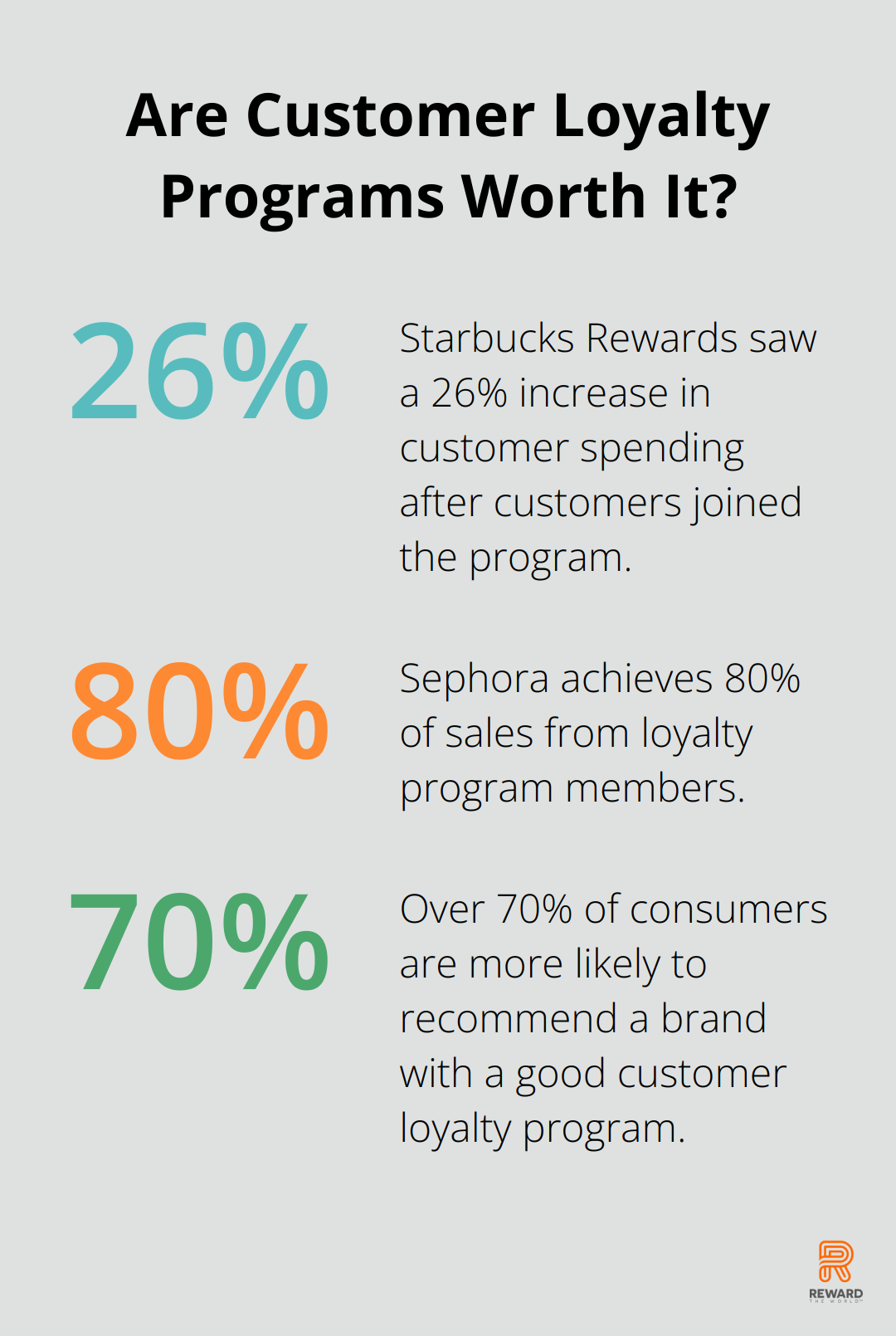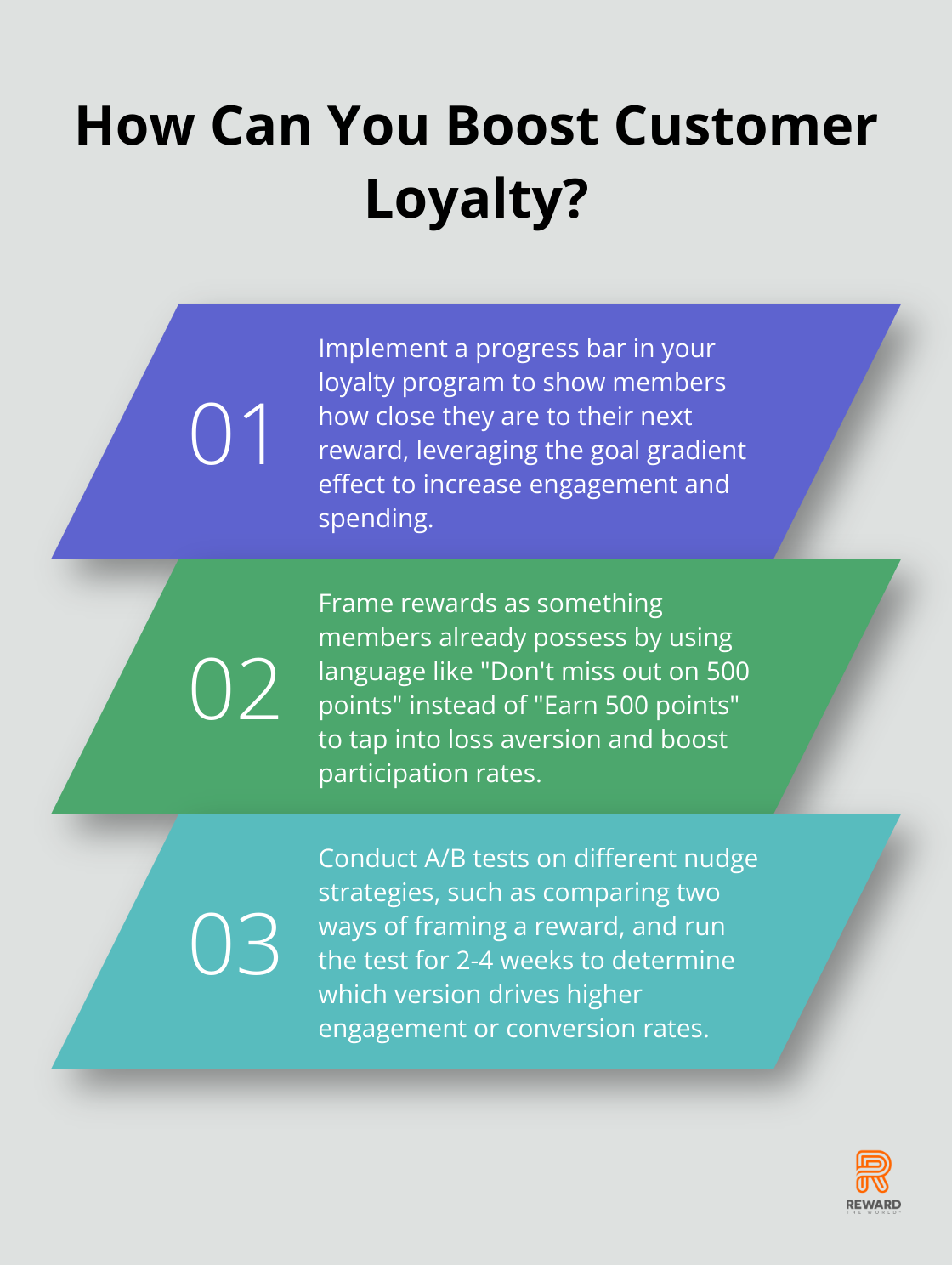
Behavioral nudges have revolutionized the way we think about customer engagement. These subtle influences can significantly impact decision-making, especially in loyalty programs.
At Reward the World, we’ve seen firsthand how small changes in program design can lead to big shifts in customer behavior. This blog post explores the power of nudges in loyalty programs and how you can use them to boost engagement and retention.
How Nudges Shape Loyalty Programs
The Science Behind Nudges
Behavioral economics has transformed loyalty programs by introducing subtle yet powerful techniques to influence customer behavior. Nudges, small changes in the environment, can significantly impact decision-making without restricting choice. These techniques tap into cognitive biases and heuristics that guide our daily decisions.

The framing effect demonstrates how information presentation can dramatically alter perception. This insight proves invaluable for loyalty programs aiming to boost engagement.
Leveraging Loss Aversion
Loss aversion stands as one of the most potent principles in behavioral economics. People typically show more motivation to avoid losses than to acquire equivalent gains. Loyalty programs can harness this by framing points or rewards as something members already possess.
For example, instead of saying “Earn 500 points with your next purchase,” a program might state “Don’t miss out on 500 points with your next purchase.” This subtle shift can significantly increase participation rates.
The Power of Social Proof
Social proof represents another key principle that loyalty programs can leverage. A 2012 Nielsen study showed that 2 out of 10 consumers (92%) prioritize recommendations from people they know over other forms of advertising. Programs can incorporate elements of social proof (such as displaying how many members have redeemed a particular reward or highlighting popular choices) to nudge members towards desired actions.
Real-World Success Stories
Several companies have successfully implemented nudges in their loyalty programs. Starbucks’ rewards program uses a progress bar to show how close members are to their next reward, tapping into the goal gradient effect. This visual cue motivates customers to make additional purchases to reach their goal faster.
Amazon Prime utilizes the endowment effect by offering a free trial. Once customers experience the benefits, they show more likelihood to continue their membership to avoid losing those perks.
While these examples showcase the potential of nudges, companies must implement them ethically and transparently. The goal should focus on guiding customers towards choices that benefit both them and the business, not on manipulation or deception.
Tailoring Nudges to Your Program
To effectively implement nudges in your loyalty program, start by analyzing your current member behavior. Identify areas where small changes could lead to significant improvements in engagement or redemption rates. Then, design and test different nudge strategies, always keeping your members’ best interests in mind.
The most effective nudges align with your members’ goals and values. Understanding your audience and applying behavioral economics principles thoughtfully can create a loyalty program that not only drives business results but also genuinely enhances the customer experience.
As we move forward, we’ll explore specific strategies for implementing effective nudges in loyalty programs, ensuring that these subtle influences maximize engagement and drive meaningful results.
How to Nudge Your Loyalty Program to Success
Frame Rewards for Maximum Impact
The presentation of rewards can significantly influence member perception of value. Instead of stating “Earn 500 points,” try “Unlock 500 points towards your next reward.” This shift emphasizes progress and goal achievement, making the reward feel more tangible and attainable.

A study by the Journal of Marketing Research found that customers are 20% more likely to participate in a loyalty program when rewards are framed as a head start rather than starting from zero. You could welcome new members with “You’re already 100 points closer to your first reward!” This creates an immediate sense of progress and encourages continued engagement.
Create a Sense of Urgency and Exclusivity
Scarcity and exclusivity are powerful motivators. Limited-time offers or member-exclusive deals can drive action and increase perceived value. For instance, “Only 50 VIP upgrades available this month” or “Exclusive 48-hour double points event for our top members” can spur immediate engagement.
Booking.com uses this technique by displaying messages like “In high demand – only 2 rooms left at this price!” This urgency nudge has increased conversions by up to 15%.
Harness the Power of Social Proof
People often look to others to guide their decisions. Incorporate social proof into your loyalty program by showcasing popular rewards or highlighting member success stories. For example, “Join over 10,000 members who’ve already redeemed this reward” or “See how Sarah used her points for a dream vacation.”
TripAdvisor effectively uses this strategy by displaying the number of reviews for each listing, influencing user trust and decision-making. A study by BrightLocal found that 91% of consumers read online reviews before making a purchase decision.
Optimize Choice Architecture
The structure of choices can significantly impact decision-making. Simplify the reward selection process by categorizing options and highlighting recommended or popular choices. Amazon’s “Customers who bought this also bought” feature is a prime example of effective choice architecture (reportedly increasing sales by 35%).
Try implementing a tiered reward system, where members can see the next level of benefits they can unlock. This creates a clear path for progression and motivates continued engagement.
These nudge strategies can transform your loyalty program from good to great. The key lies in testing and refining your approach based on member feedback and behavior. In the next section, we’ll explore how to measure the impact of these nudges and ensure they’re delivering the desired results.
How to Measure and Optimize Your Loyalty Program Nudges
Track Key Performance Indicators
To assess the success of your nudges, focus on specific metrics that directly relate to your program goals. Conversion rates are essential – monitor how many members take the desired action after exposure to a nudge. For example, if you implement a scarcity nudge for a limited-time offer, measure the percentage of members who redeem the offer compared to your baseline.

Engagement metrics hold equal importance. Observe changes in program participation rates, frequency of interactions, and average transaction values. Studies have shown that customer loyalty programs are positively correlated with customer retention in the retail industry. Effective nudges should lead to an increase in these numbers.
Retention rates provide insight into long-term nudge effectiveness. Over 70% of consumers are more likely to recommend a brand with a good customer loyalty program. Monitor how your nudges impact member churn and overall program satisfaction.
Master A/B Testing for Nudge Optimization
A/B testing serves as a powerful tool for refining nudges. Begin by creating two versions of a nudge – your control (A) and your variation (B). Randomly split your audience and expose each group to a different version.
Test two different ways of framing a reward: “Earn 500 points” vs “Don’t miss out on 500 points.” Run the test for a statistically significant period (typically 2-4 weeks for most loyalty programs). Analyze the results to determine which version drove higher engagement or conversion rates.
Test one element at a time to isolate its impact. Multivariate testing can yield powerful results but requires larger sample sizes and more complex analysis. For most loyalty programs, simple A/B tests produce actionable insights more quickly.
Learn from Real-World Success Stories
Several companies have successfully leveraged nudges in their loyalty programs:
Starbucks Rewards uses a progress bar to show members how close they are to their next free drink. This visual nudge leverages the goal gradient effect, where people accelerate their efforts as they approach a goal. The result? A 26% increase in customer spending after joining the program.
Amazon Prime’s free trial exemplifies the endowment effect. Once customers experience the benefits, they continue their membership to avoid losing those perks. This strategy has contributed to Prime’s impressive 93% first-year renewal rate.
Sephora’s Beauty Insider program uses tiered rewards to create a sense of exclusivity and progress. Members can see what perks they’ll unlock at the next tier, encouraging them to increase their spending. This approach has helped Sephora achieve a remarkable 80% of sales from loyalty program members.
While these examples showcase successful nudge implementations, Reward the World offers a comprehensive solution that combines these strategies with advanced analytics and seamless integration. Our platform enables businesses to create, measure, and optimize nudges effectively, driving engagement and loyalty across various industries.
Continuously Refine Your Approach
The power of well-implemented nudges becomes evident through careful measurement and ongoing refinement. Try to understand your members, test rigorously, and always prioritize value for both your customers and your business. With the right tools and strategies (such as those offered by Reward the World), you can transform your loyalty program from good to exceptional.
Final Thoughts
Behavioral nudges have revolutionized loyalty programs, offering subtle yet powerful ways to influence customer behavior. These small interventions can lead to significant improvements in program participation, redemption rates, and overall customer satisfaction. Effective implementation requires a deep understanding of your audience, careful design, and rigorous testing.

The field of behavioral economics continues to evolve, offering new insights and opportunities for loyalty program design. Personalization will play an increasingly important role, with AI and machine learning enabling more tailored and timely nudges. Businesses will also focus more on emotional engagement, as programs strive to create deeper connections with members beyond transactional relationships.
Reward the World offers a comprehensive solution for businesses looking to harness the power of behavioral nudges in their loyalty programs. With its user base, multilingual support, and diverse reward options, Reward the World provides the tools and insights needed to create engaging, effective loyalty programs that drive results. Businesses can create loyalty programs that not only incentivize desired behaviors but also enhance the overall customer experience.
